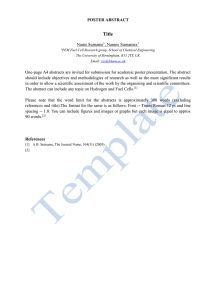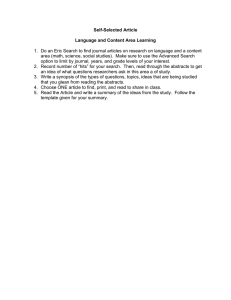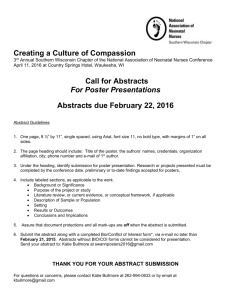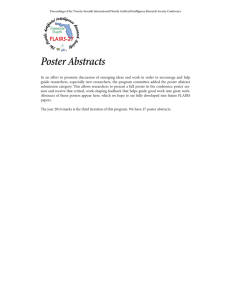A Guide to Writing an Abstract - Mathematical Association of America
advertisement
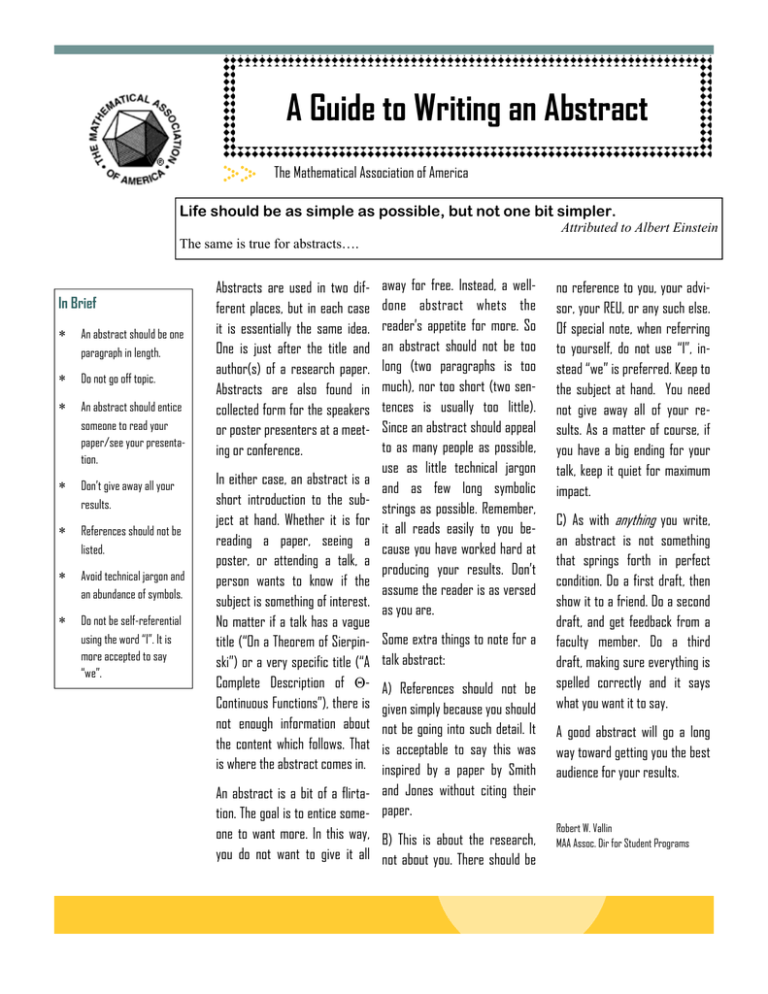
A Guide to Writing an Abstract The Mathematical Association of America Life should be as simple as possible, but not one bit simpler. Attributed to Albert Einstein The same is true for abstracts…. In Brief ∗ An abstract should be one paragraph in length. ∗ Do not go off topic. ∗ An abstract should entice someone to read your paper/see your presentation. ∗ Don’t give away all your results. ∗ References should not be listed. ∗ Avoid technical jargon and an abundance of symbols. ∗ Do not be self-referential using the word “I”. It is more accepted to say “we”. Abstracts are used in two different places, but in each case it is essentially the same idea. One is just after the title and author(s) of a research paper. Abstracts are also found in collected form for the speakers or poster presenters at a meeting or conference. In either case, an abstract is a short introduction to the subject at hand. Whether it is for reading a paper, seeing a poster, or attending a talk, a person wants to know if the subject is something of interest. No matter if a talk has a vague title (“On a Theorem of Sierpinski”) or a very specific title (“A Complete Description of ΘContinuous Functions”), there is not enough information about the content which follows. That is where the abstract comes in. away for free. Instead, a welldone abstract whets the reader’s appetite for more. So an abstract should not be too long (two paragraphs is too much), nor too short (two sentences is usually too little). Since an abstract should appeal to as many people as possible, use as little technical jargon and as few long symbolic strings as possible. Remember, it all reads easily to you because you have worked hard at producing your results. Don’t assume the reader is as versed as you are. Some extra things to note for a talk abstract: A) References should not be given simply because you should not be going into such detail. It is acceptable to say this was inspired by a paper by Smith An abstract is a bit of a flirta- and Jones without citing their tion. The goal is to entice some- paper. one to want more. In this way, B) This is about the research, you do not want to give it all not about you. There should be no reference to you, your advisor, your REU, or any such else. Of special note, when referring to yourself, do not use “I”, instead “we” is preferred. Keep to the subject at hand. You need not give away all of your results. As a matter of course, if you have a big ending for your talk, keep it quiet for maximum impact. C) As with anything you write, an abstract is not something that springs forth in perfect condition. Do a first draft, then show it to a friend. Do a second draft, and get feedback from a faculty member. Do a third draft, making sure everything is spelled correctly and it says what you want it to say. A good abstract will go a long way toward getting you the best audience for your results. Robert W. Vallin MAA Assoc. Dir for Student Programs
